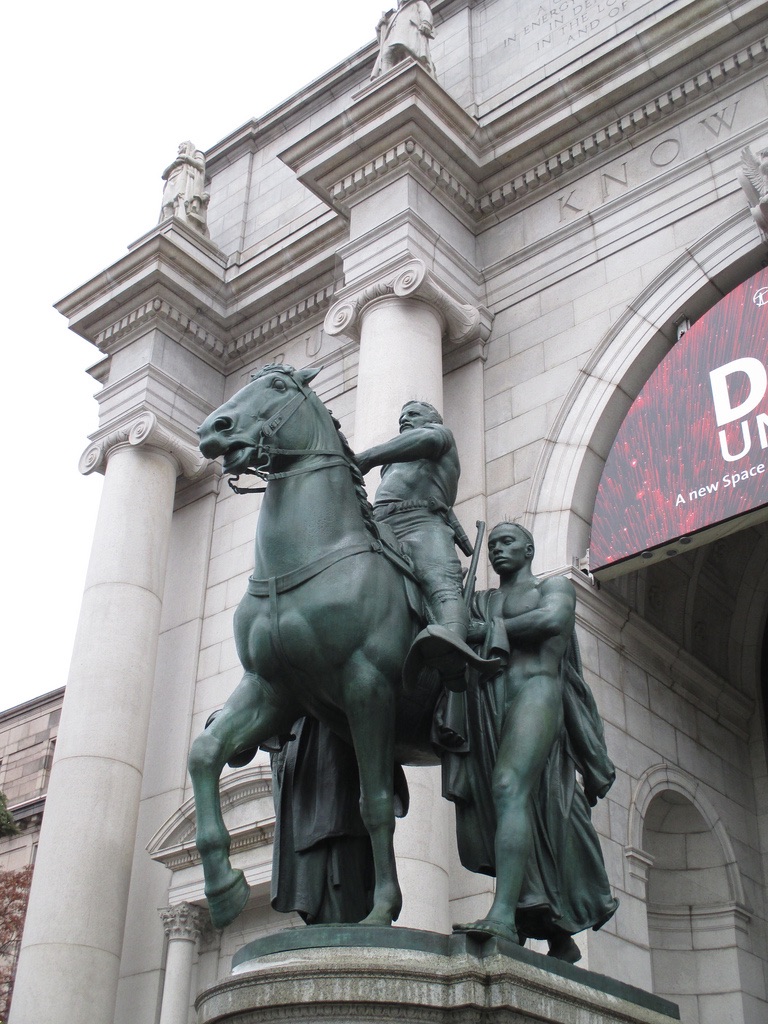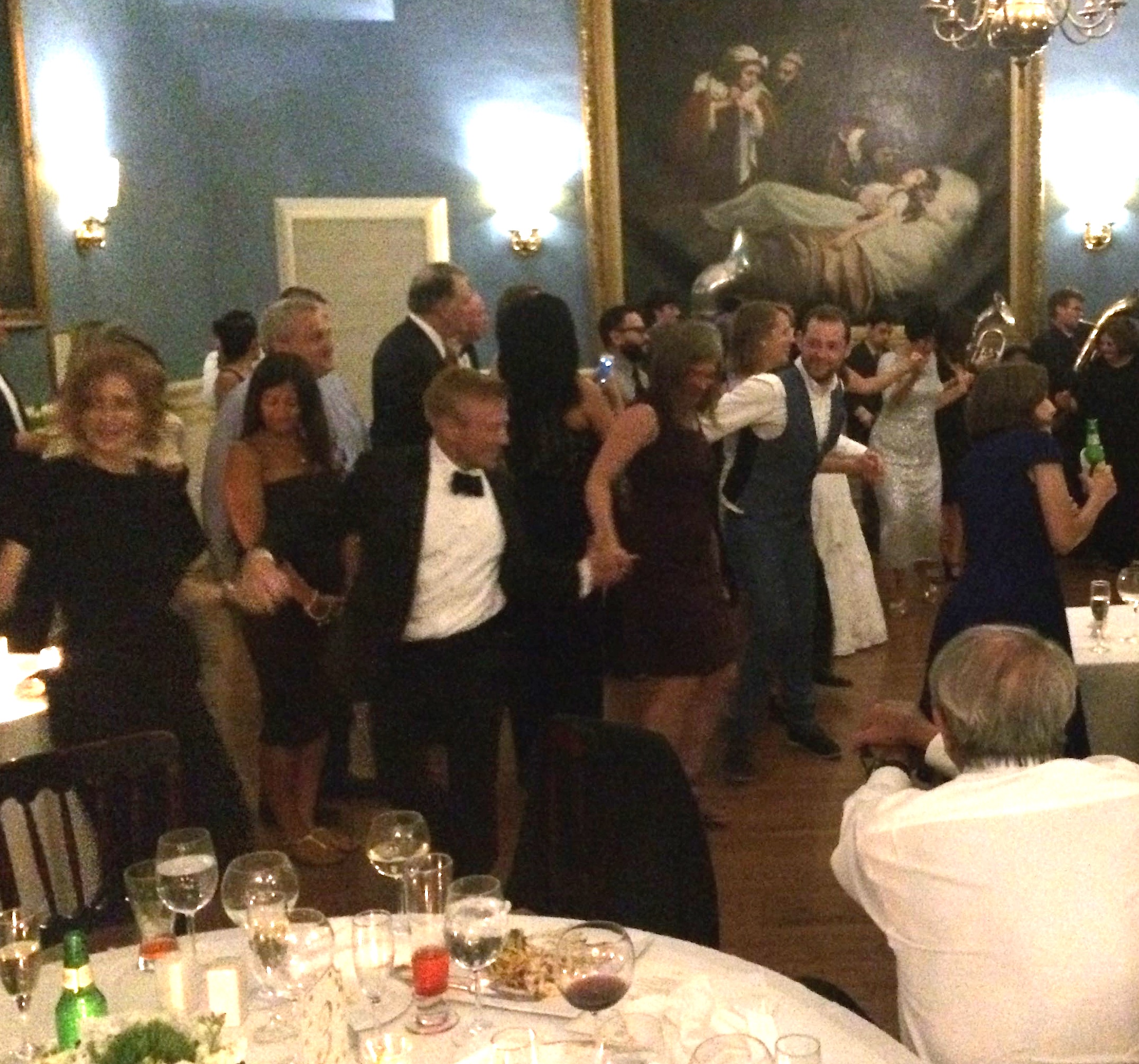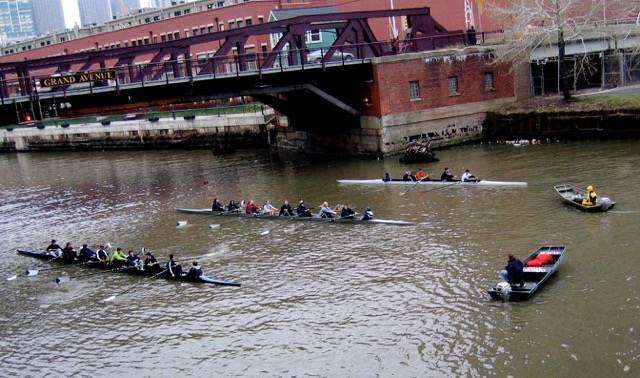Soon after we moved from Urbana to Chicago, Beth connected with a great local organization called Blind Service Association. Among other things, it provides sighted readers to people who need stuff read. Beth needed stuff read, and truth is, I needed to have her have stuff read—because I can’t keep up with it all.
Now, you might be thinking great literature, poetry, or the like. But no, what Beth and lots of people who are blind really need read are bills, instruction sheets, miscellaneous snail mail, the printed flotsam and jetsam that isn’t available online. Some also need help filling out forms, balancing checkbooks and addressing envelopes.
So the volunteer readers are a game lot. One of Beth’s first volunteers was a Bronx-born, Yankee-rooting, retired public school teacher who’d followed her physician husband to Chicago. Benita and Beth hit it off right away. And though their reading dates dwindled over time, they continued to see each other socially. I eventually met Benita and her husband Henry, and we always shared lots of laughs, great conversation, and usually some good food and drink. The two of them made the most of their time in Chicago, choosing not, at least in my company, to bemoan not being in New York. Memorably, we watched game 2 of the 2005 World Series with Benita and Henry on the big screen TV at their apartment, all hooting when Scott Podsednik launched an unlikely walk-off home run to give the Sox a 2 games to none lead in the series.

Our walk in NY included a visit to the enormous statue of Teddy Roosevelt in front of the American Museum of Natural History.
Last Thursday evening we found ourselves again in Henry and Benita’s living room. I sipped on a fine cocktail mixed by the good doctor. Only this time, their living room was in New York’s Upper West Side. Henry retired awhile back and the two of them returned to their roots.
Our generous hosts treated us to dinner at a neighborhood favorite and the next morning we convened for the best lox and bagel ever at a place called Barney Greengrass, a deli that Henry’s father used to go to. Our friends live across from the American Museum of Natural History (you know, the Night at the Museum one), and a block from Central Park. Benita and Henry led us on a glorious hike through the park, we passed the Delacorte Theater, stopped at the frog pond, crossed to the East Side . . . I think I could grow to love New York.
The best part, though, was simply Benita and Henry’s company. Witty, well traveled, well-read. It’s just good being together.
Benita rode with us on the Subway to Penn Station to see that we were on time for our Amtrak to Philadelphia. Two notable things about that: I didn’t think there could be a more poorly laid-out terminal than Chicago’s Union Station, but Penn Station is in the running. And, Amtrak was on time and we were in Philly before we knew it.
We checked in at the Philadelphia Racquet Club, the headquarters for the wedding we’d be attending. The vaunted institution clearly had seen better days, but it still exuded all that clubby “let’s play a game of squash “ atmosphere.
Then it was a couple blocks to the rehearsal dinner for the wedding of my god-daughter, Sasha. Well, technically, by rites of the Serbian Orthodox Church, she is my Kuma—but that’s another story.
I hadn’t seen her in years and years. I had, however, stayed in touch with her mother, whom I have known since I was a teenager. Rebecca and I were fast friends and partners in crime through high school, and during summers when we were home from college. What we had in common was restlessness, a raw hunger to get out there in the world and see what we could do.
We talked culture, politics—and I’d hang out at her house where her father would pick apart my political arguments. If I equivocated, Mitch was quick to say in a Humphrey Bogart voice, “The problem with you is you have your ass in two chairs. You gotta get your ass in one chair, pal.”
Meanwhile, Rebecca’s mom Mildred would bring me food and then more food.

At Sasha’s and James’ wedding, there was much music and just as much dancing.
Through those years, Rebecca and I helped one another stay sane. Over the decades, our lives meandered in very different directions but somehow we never lost touch.
The rehearsal dinner was full of conversation and a bunch of happy people, as was the wedding—held in a Greek Orthodox Church (a Serbian one wasn’t handy). James the groom and his family are of Scottish descent, and his people wore some pretty spiffy formal kilts.
The reception? Great food and drink, and one-of-a-kind music: A brass band. Comprised of Philadelphia Philharmonic Orchestra players. Playing Balkan music. Phenomenal.
I’m told the reception went till 3:30. We didn’t make it to that hour.
We were up and wide awake, however, the next morning. As it happens, Sasha’s new husband is a Quaker. And so we were off for a Quaker meeting to mark the union of James and Sasha. It was my first Friends meeting, and it may not be the last. It goes like this: You sit. You shut up. You contemplate. Quietly. And if you are moved to share something, you stand and say it, sit back down, and continue contemplating.
It was perfect. I thought about those times at Rebecca’s house some 30 years ago. I thought about her parents, and how I had seen their faces in the faces of their children and grandchildren all weekend. I thought about how if someone had told me and Rebecca back when I was 18 that one day we’d be in a Friends Meeting celebrating her daughter’s wedding, we would’ve been dumbfounded. I thought about the magnificent old trees in Central Park, and the frogs.
And I thought about all of our wonderful friends.





